How To Choose The Right Reciprocating Saw Blade Size
- December 12, 2023
- 0 comment
Discover how to select the perfect reciprocating saw blade size for your project. Our guide provides clear, informative tips to match your specific cutting needs. The selection of the right blade size is imperative as different materials and applications necessitate blades of varying dimensions. Ensuring compatibility with the material’s thickness is vital; longer blades are preferable for thicker materials, providing versatility for shallower cuts.
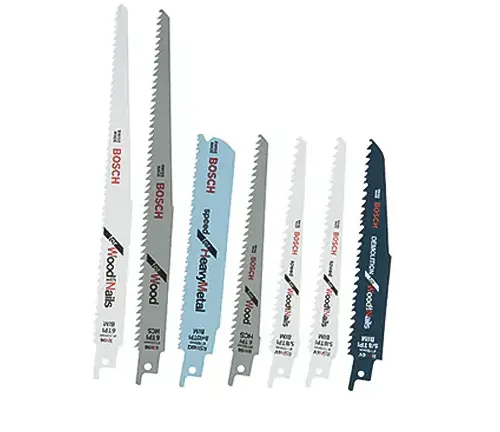
Additionally, considering the width and thickness of the blade is essential, especially when dealing with heavy-duty tasks or specific cutting requirements. Having a diverse range of blade sizes in your toolkit enables you to tailor your equipment to the demands of different projects, optimizing efficiency and ensuring precise and effective cutting performance.
Blade Length
The length of a reciprocating saw blade plays a pivotal role in determining its cutting capabilities, specifically the depth of the cut it can achieve. Longer blades are adept at making deeper cuts, making them suitable for tackling thicker materials. To optimize performance, it is recommended to select a blade that is a few inches longer than the thickness of the material intended for cutting. Standard lengths for reciprocating saw blades range from 4 inches to 12 inches, with 9-inch blades emerging as popular choices for general DIY projects.
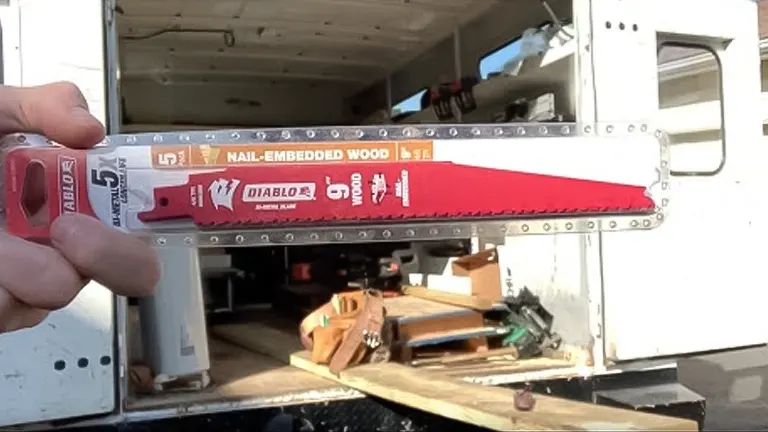
The advantages of longer blades extend beyond increased cutting depth, encompassing enhanced flexibility for flush cuts and curved cutting. Additionally, the cooling properties of longer blades contribute to an extended lifespan. These elongated blades find utility in tasks ranging from pruning to heavy-duty demolition work. On the other hand, shorter blades exhibit less flexibility, resulting in a more aggressive cutting action.
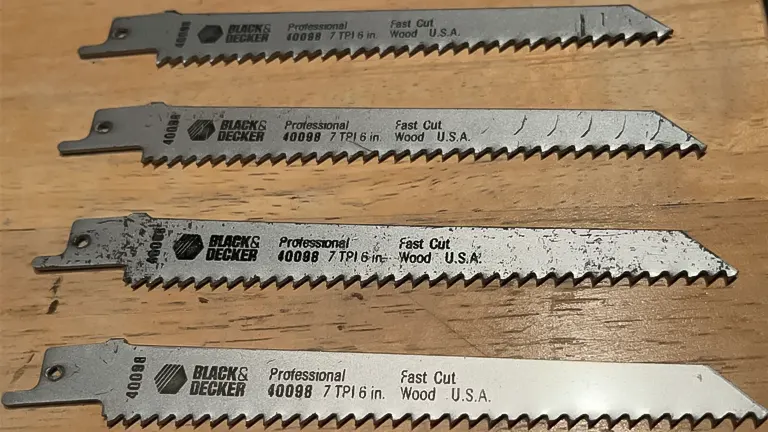
They offer increased control, facilitating precise and straight cuts. The rigidity of shorter blades proves advantageous when cutting thicker metals or initiating cuts in materials without existing edges or pilot holes, commonly referred to as plunge cuts. Understanding the nuanced characteristics of blade length enables users to make informed decisions based on the specific requirements of their cutting projects.
Blade Width and Blade Thickness
Blade width is a crucial dimension in reciprocating saws, and it plays a significant role in determining the tool’s stability and performance. Wider blades, akin to their shorter counterparts, exhibit greater rigidity and provide increased stability compared to narrower ones. Manufacturers measure width across the face of the blade, from the teeth to the top, resulting in wider blades having a more substantial profile. When undertaking demolition work, it is recommended to use a blade that is 3/4-inch-wide or broader. For tasks requiring a smoother finish or more delicate precision, opting for a narrower, low-profile blade is advisable.
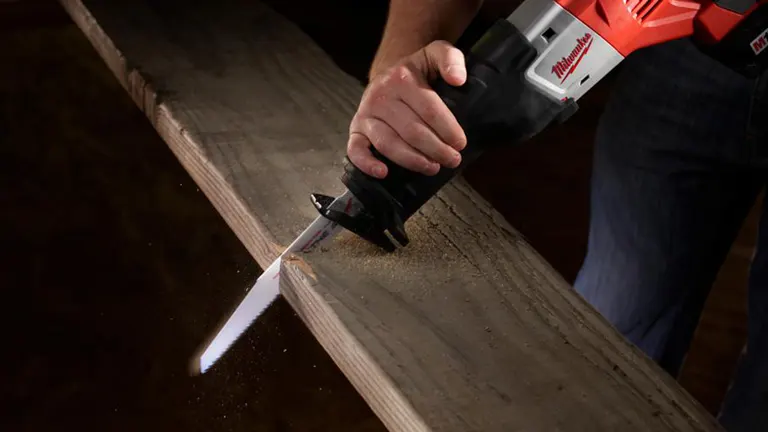
In addition to width, blade thickness is a key consideration in selecting the right reciprocating saw blade. Manufacturers gauge thickness across the blade edge, and like length and width, it contributes to the blade’s strength and rigidity. Blade thickness typically ranges from .035 inch to .050 inch or more. Thinner blades are well-suited for general do-it-yourself projects, detailed cutting, and achieving a smooth finish. On the other hand, thicker and more robust blades are suitable for heavy-duty tasks, cutting through tough and dense materials.
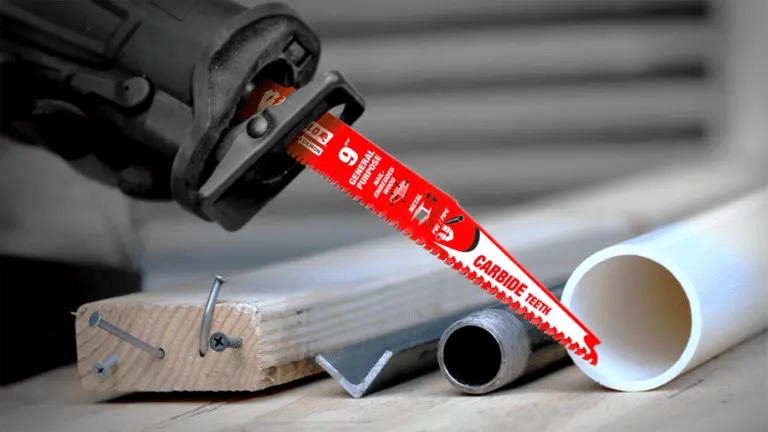
The thickness of the blade influences the width of the cut, known as the kerf, with thicker blades removing more material. This aspect is crucial in situations where precise measurements and cuts are essential for the success of the project. Understanding and selecting the appropriate blade width and thickness are vital steps in ensuring the efficiency and accuracy of reciprocating saw applications across a range of projects.
Comprehending Teeth Per Inch (TPI) in the Selection of Reciprocating Saw Blades
When delving into the realm of reciprocating saw blades, one of the primary specifications you encounter is Teeth Per Inch (TPI). TPI serves as an indicator of the number of teeth present on the blade, typically falling within the range of 6 to 24. Grasping the significance of TPI is pivotal in the quest for the most suitable reciprocating saw blade for diverse tasks.
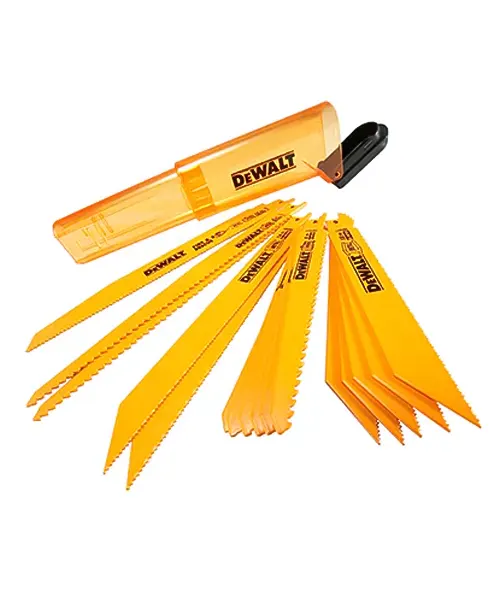
TPI plays a crucial role in determining blade performance. Blades boasting a lower TPI execute cuts at a swifter and more aggressive pace, making them adept for tasks demanding speed and the ability to cut through materials like lumber and nails, as seen in demolition projects. Conversely, blades with a higher TPI yield a smoother cut, making them ideal for situations where a clean finish is paramount. Additionally, TPI is a key factor in the type of material a blade is adept at cutting.
Blades with a lower TPI are well-suited for wood, excelling in scenarios prioritizing speed over a polished finish. On the other hand, blades with a higher TPI measurement are perfect for precise wood cutting where clean edges are crucial. Furthermore, they can be suitable for cutting through metal, showcasing the versatility of reciprocating saw blades in catering to a variety of cutting needs based on their TPI. Understanding and leveraging TPI effectively empower users to optimize the performance of their reciprocating saws across a spectrum of applications.
- An ideal choice for pruning trees and swiftly cutting through tree limbs, a 6-TPI blade proves valuable in demolition work where cutting through lumber and nails is necessary before a remodel. In such scenarios, the focus is on efficiency rather than achieving clean edges, as the replaced lumber or subsequent coverings like drywall and siding eliminate the need for pristine finishes.
- Tailored for metal-cutting applications, a 14-TPI blade excels in handling various types and thicknesses (gauges) of metal. Remarkably versatile, these blades can also be employed for wood cutting, striking a harmonious balance between producing smooth cuts and maintaining a commendable cutting speed.
- Reserved primarily for metal cutting, higher-TPI blades, such as those with 18 and 24 TPI, demonstrate their prowess in precision cutting tasks involving metal. These blades are engineered to deliver optimal performance when finesse and accuracy are paramount.
Investing in a reciprocating blade set featuring a range of TPI specifications proves to be an excellent choice for do-it-yourself enthusiasts. Such a set provides a versatile array of options, ensuring readiness for a diverse spectrum of cutting tasks, and empowers users to adapt their tool to the specific demands of different materials and projects.
Reciprocating Saw Blade Materials and Uses
The choice of reciprocating saw blade material is a significant factor when selecting the most suitable blade for a specific application.
Bi-Metal Blades
Reciprocating Saw Blades of the BI-Metal variety incorporate a dual-metal construction, utilizing one type of metal for the teeth and another for the blade’s body. This hybrid design often involves employing high-speed steel for the teeth, ensuring prolonged sharpness, while the body of the blade is constructed with carbon steel for enhanced strength and flexibility. The durability of the blade is thus achieved through the advantageous properties of both metals.
Bi-metal blades demonstrate versatility in general cutting applications, and their design allows them to cut through a range of materials, including metal, fiber cement, tile, as well as softer materials like wood and drywall, depending on the specific blade configuration.
Carbide Tooth Blades
Carbide Tooth Reciprocating Saw Blades also contain two materials, usually a steel blade with tips made of carbide attached to the ends of the teeth. The carbide material makes the teeth highly resistant to heat and exceptionally hard, creating a blade that lasts longer than bi-metal types.
These blades are perfect for cutting hard and thick metals and some can cut masonry products as well.
Carbide Grit Blades
Carbide Grit Reciprocating Saw Blades take advantage of the hardness and durability of carbide material, but these blades don’t have teeth. The grit is bonded to the blade surface. Since these blades don’t have teeth, there’s less risk of the blade getting stuck in the material.
These blades cut materials like tile, ceramics, and brick.
Diamond Grit Blades
Diamond Grit Reciprocating Saw Blades are another type of blade that cuts with an abrasive surface rather than teeth. These particles are harder than carbide, creating a longer-lasting but more expensive blade.
Diamond particles affixed to the blade can cut cast iron, stone and brick, letting you use your reciprocating saw as a masonry saw.
Comparison Table
Here’s a comparison table for Bi-Metal Blades, Carbide Tooth Blades, Carbide Grit Blades, and Diamond Grit Blades:
| Blade Type | Material Composition | Durability | Versatility | Best Applications |
|---|---|---|---|---|
| Bi-Metal Blades | Two metals (e.g., high-speed steel and carbon) | Durable, balanced | General cutting, metal, wood, demolition | Suitable for a wide range of applications |
| Carbide Tooth Blades | Steel blade with carbide tips on teeth | Very durable | Hard and thick metals, some masonry products | Ideal for cutting through tough materials |
| Carbide Grit Blades | Steel blade with carbide particles embedded | Very durable | Fiberglass, abrasive materials, cast iron, tile | Excellent for cutting abrasive and hard materials |
| Diamond Grit Blades | Steel blade with diamond particles bonded | Extremely durable | Concrete, stone, glass, ceramics | Specifically designed for cutting through hard and abrasive materials |
Visual Aspects Review for Recommendation
Visual aspects play a crucial role in guiding the recommendation for choosing the right reciprocating saw blade size in the Marketplace 2023. A visually intuitive presentation of blade size options, TPI specifications, and materials allows users to quickly identify the most suitable blades for their specific needs. Clear and informative graphics depicting blade lengths, widths, and thicknesses aid in decision-making, ensuring that users can easily match the blades to the tasks at hand.
Additionally, visually appealing packaging that highlights key features and recommended applications can enhance the overall user experience. In a marketplace flooded with options, a well-designed presentation of reciprocating saw blades not only simplifies the decision-making process but also instills confidence in users, empowering them to make informed choices based on visual cues and comprehensive information.
Final Thoughts
In conclusion, navigating the selection of the right reciprocating saw blade size in Marketplace 2023 involves a thoughtful consideration of various factors to ensure optimal performance for diverse applications. From TPI and blade length to width and thickness, each element contributes to the blade’s suitability for specific materials and cutting tasks. Investing in a versatile blade set that encompasses a range of TPI specifications can enhance a do-it-yourselfer’s toolkit, providing adaptability across a spectrum of projects.
Additionally, understanding the distinctions between blade materials, such as bi-metal and carbide-tooth blades, adds an extra layer of customization based on durability and application requirements. Whether you’re tackling woodworking, metal cutting, or demolition work, your choice of reciprocating saw blade size plays a pivotal role in achieving precision, efficiency, and overall project success.
Frequently Asked Questions
Explore the following answers to commonly asked questions about reciprocating saw blades to assist you in choosing the most suitable blades for your saw and optimizing their use.
- Can I Use a Reciprocating Saw to Cut Tree Branches?
Yes, a reciprocating saw equipped with a wood-cutting blade is capable of cutting tree branches reachable from the ground. A 4- to 6-TPI blade, with a length of 9 or 12 inches, is generally recommended for pruning, ensuring it extends a few inches beyond the diameter of the branches. - Do Reciprocating Saw Blades Fit All Saws?
No, reciprocating saw blades are not universally interchangeable among different saws. While some are specific to particular brands or models, universal reciprocating blades designed to work with multiple saws are available. It’s essential to confirm a blade’s compatibility with your saw before purchasing or attempting to install it. - How Do You Replace a Reciprocating Saw Blade?
Begin by unplugging the saw or disconnecting the battery. Loosen the blade clamp and remove the blade from the shank. Place a new blade onto the positioning pin, engage the clamp, and ensure the blade is securely locked. Follow the instructions for your specific saw, and wear work gloves for safety. Allow the blade to cool before handling, as it can become hot during use. - What Is the Longest Blade for a Reciprocating Saw?
The standard reciprocating saw accommodates a 12-inch blade, although longer blades may be available for specific saws and applications. It’s crucial to choose a blade length only a few inches longer than the material’s thickness to maintain control during cutting. - Are Jigsaw Blades and Reciprocating Saw Blades the Same?
No, jigsaw blades and reciprocating saw blades differ despite their reciprocating action. Jigsaw blades are narrow and designed for detailed cuts, including circles and intricate shapes, while reciprocating saw blades are tailored for heavy-duty tasks such as cutting studs, metal pipes, and masonry. - How Long Do Reciprocating Saw Blades Last?
The lifespan of a reciprocating saw blade depends on the material being cut and the blade’s material. Blades wear more quickly when cutting hard materials. For comparable DIY work, carbide-tooth blades generally outlast other toothed blades, while carbon blades wear out the fastest.
We value your input! Feel free to share your personal experiences and thoughts on selecting the right reciprocating saw blade size in the Marketplace 2023. Your insights can be invaluable in guiding other users to make informed decisions. Share your knowledge and help the community by leaving your comments below!

Edward Smith
Forestry AuthorWoodworking is about more than crafting; it's a harmonious connection with nature, mastering tools, and preserving our environment. I'm here to share my knowledge and experiences with you, forging a future where we can embrace wood's beauty and utility while safeguarding our forests' health and diversity.

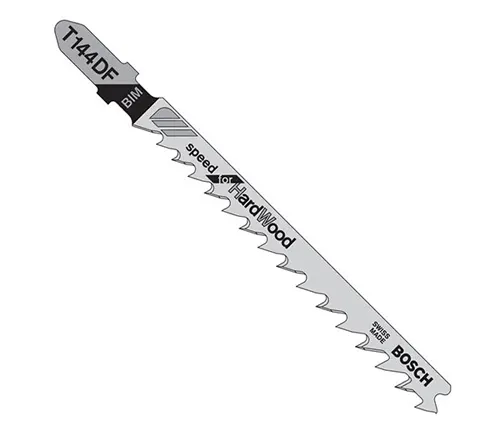
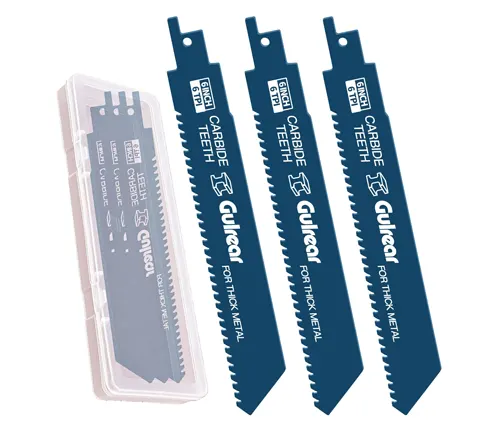
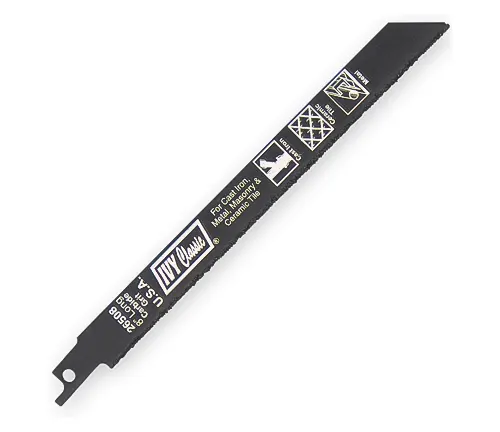
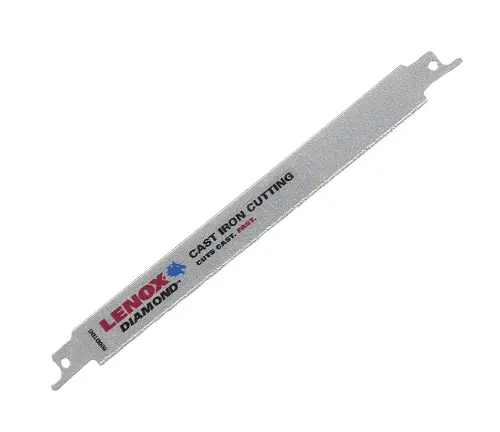












Leave your comment